This pescado a la diabla really kick up the heat in the kitchen! A classic Mexican recipe that combines fish fillets in a bold and flavorful sauce to bring a touch of devil’s heat to your plate.
Pescado a la diabla is a traditional Mexican seafood dish made with white fish fillets smothered and cooked in a fiery tomato-based sauce. The recipe originated in the coastal regions of Mexico, where seafood is a common ingredient in local cuisine.
It is a popular dish in many coastal cities in Mexico and is also enjoyed in Mexican-American communities in the United States.
The diabla sauce, which means devil in Spanish, is usually made with tomatoes, chilies like guajillo and chile de árbol, and spices like oregano and thyme. It is essentially the same sauce I used in my camarones a la diabla recipe!
To make pescado a la diabla you start by preparing the diabla sauce, which involves blending the rehydrated chilies with tomatoes, and spices.
Once the sauce is ready, pan-fry the fish fillets until they are golden brown, and then simmer everything together for a couple of minutes. It is a super easy recipe that comes together in about 30 minutes!

Love fish stew recipes? Check out also our Pescado a la Veracruzana!
Ingredients
- Fish: Any white fish fillet such as tilapia, cod, red snapper, or halibut can be used. If you use small fillets, make sure to add two per person instead of one only.
- Tomatoes: Fresh tomatoes are the best option, but canned diced tomatoes can also work.
- Chili peppers: Guajillo and chile de arbol are typically used in the diabla sauce but also other types like chile chipotle. If you’re not into spiciness, these can be substituted with milder options like ancho or pasilla chiles for a smoky flavor kick.
- Herbs and spices: Fresh onion and garlic are essential for the diabla sauce. Oregano and thyme provide a nice earthy flavor.
- Seasonings: Season the fish with salt and pepper to taste. I also added some powdered fish bouillon.
- Oil: I used extra virgin olive oil, but any cooking oil will work too.
- Flour: Use all-purpose flour to dredge the fillets before frying them.
How To Make Pescado A La Diabla
Place guajillo and chile de árbol in a bowl, and cover them with hot water. Leave them to soak for 10 minutes.

Top Tip: Use less chile de arbol and more guajillo chiles if you want the sauce to be less spicy.
Meanwhile, preheat the broil in your oven.
Place tomatoes, onion, and garlic on a baking sheet. Drizzle everything with a little bit of olive oil.

Place the tray under the broil and roast for 7-8 minutes or until onions are nicely charred and tomatoes have softened.

Drain chilies and place them in a blender along with roasted tomatoes, onion, garlic, oregano, and fish bouillon. Add 1 1/2 cups of water and blend until smooth.

Place about 1/2 cup of all-purpose flour on a flat plate.
Season the fish fillets with salt and pepper, then lightly flour them on both sides.

Heat a bit of olive oil over medium heat in a non-stick pan.
Arrange the fish and pan fry for about 3 minutes on one side, then gently flip the fillets and fry until lightly golden and crisp.
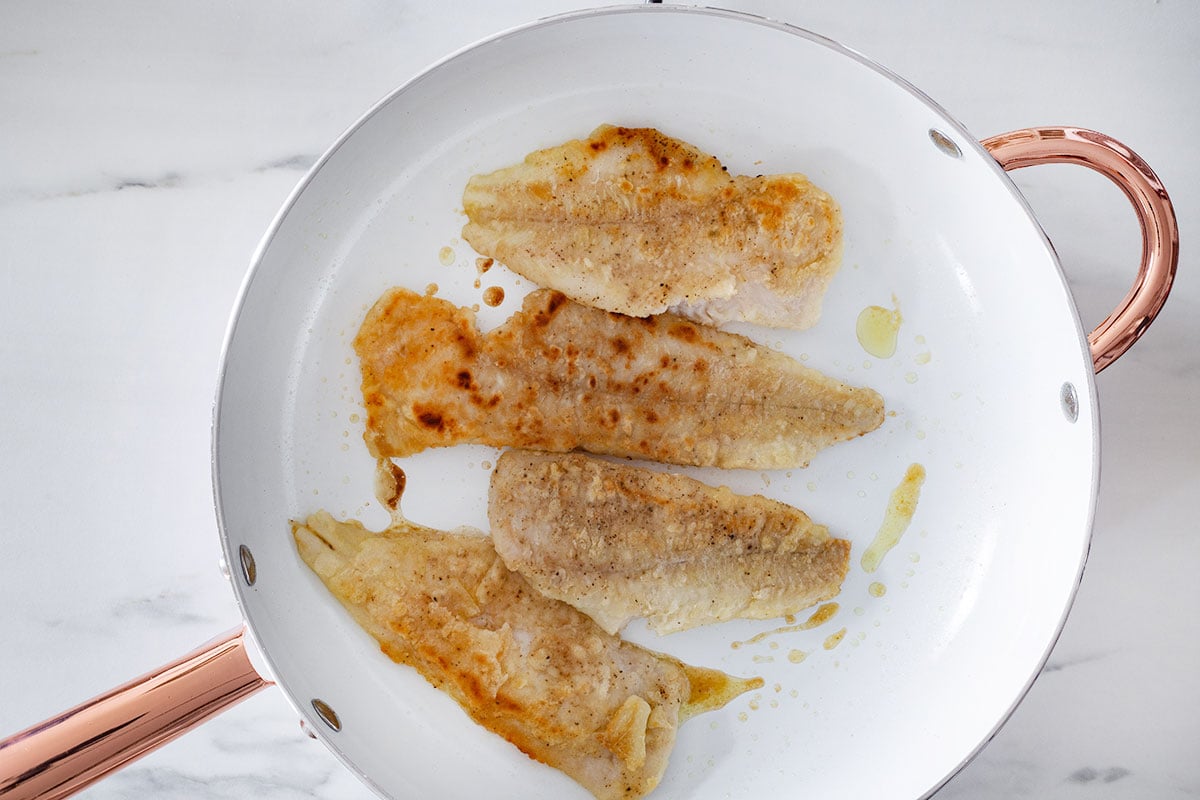
Carefully remove the fish from the pan and transfer it to a plate. Set aside.
Add the red chile sauce to the pan and bring to a simmer. Season with salt and cook for 5-6 minutes or until the sauce thickens a little bit.
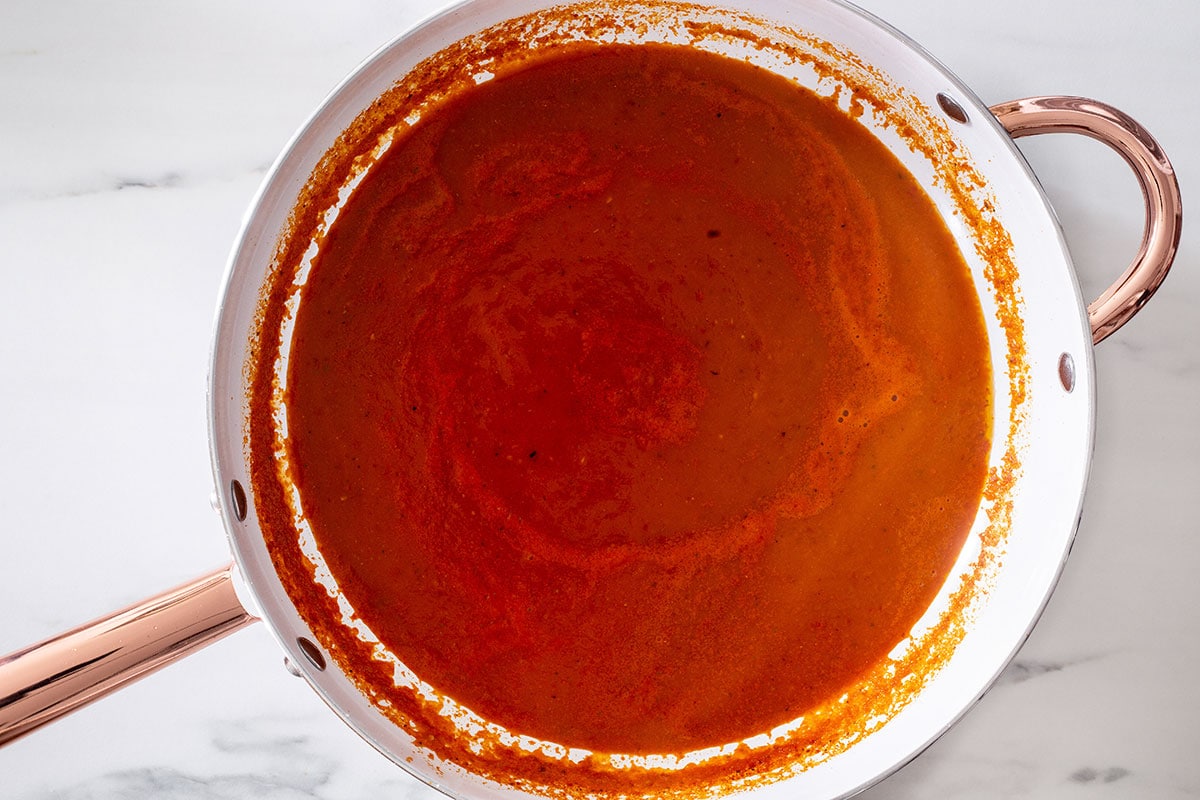
Carefully, return the fried fish to the pan and cook for 3 minutes basting the fillets with the spicy chili sauce and making sure they’re nicely immersed.
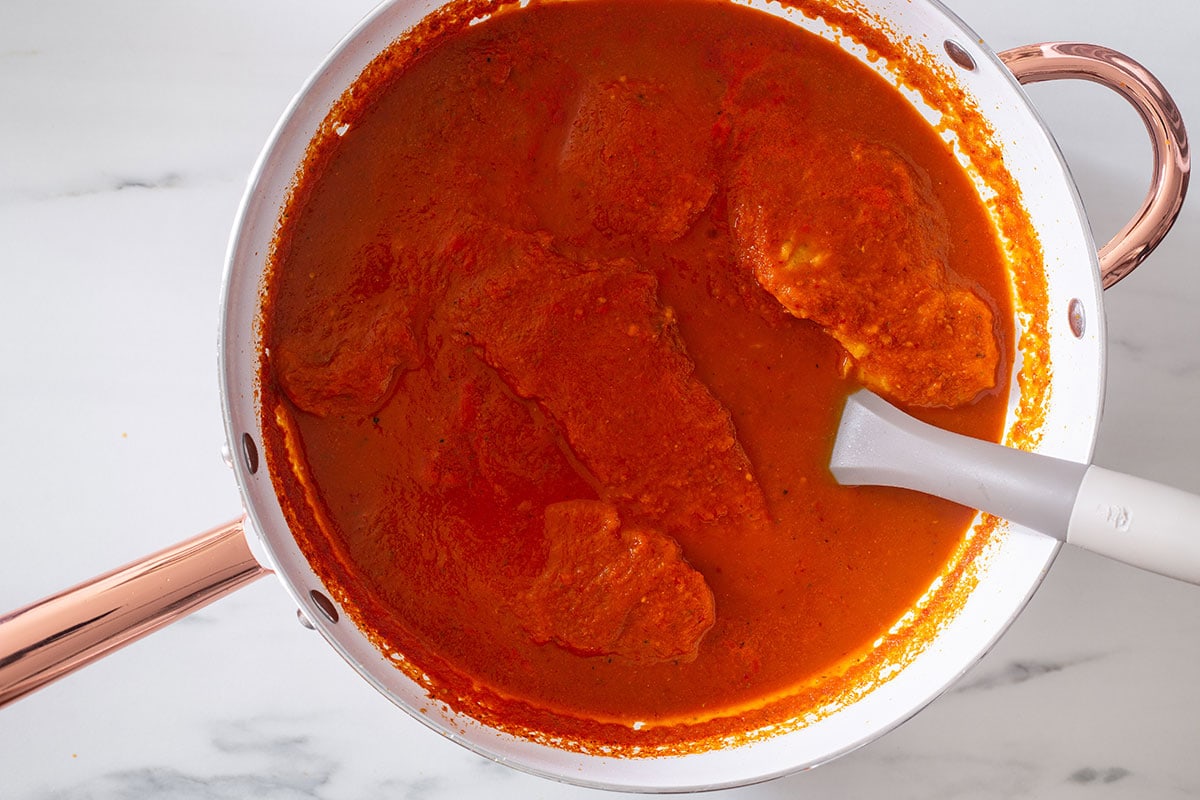
Divide the Mexican deviled fish into serving plates, drizzle with plenty of sauce, sprinkle with chopped cilantro, and serve with a side of rice.
Expert’s Notes
- Soak and rehydrate the dried chilies before blending them with other ingredients to make a smoother sauce with better flavor and more heat.
- Deseed the chilies as the seeds can add slightly bitter notes to the sauce.
- Dredging the fish fillets in flour and then frying them helps them to not fall apart when simmering them in the sauce.
Serving Suggestions
A plate of pescado a la diabla is best served with Mexican-style rice like arroz a la mantequilla, as the butter helps to tone down the spiciness.
Other types of sides we recommend are Cilantro lime rice, Arroz blanco, and Pickled onions for a nice tangy and crispy touch.
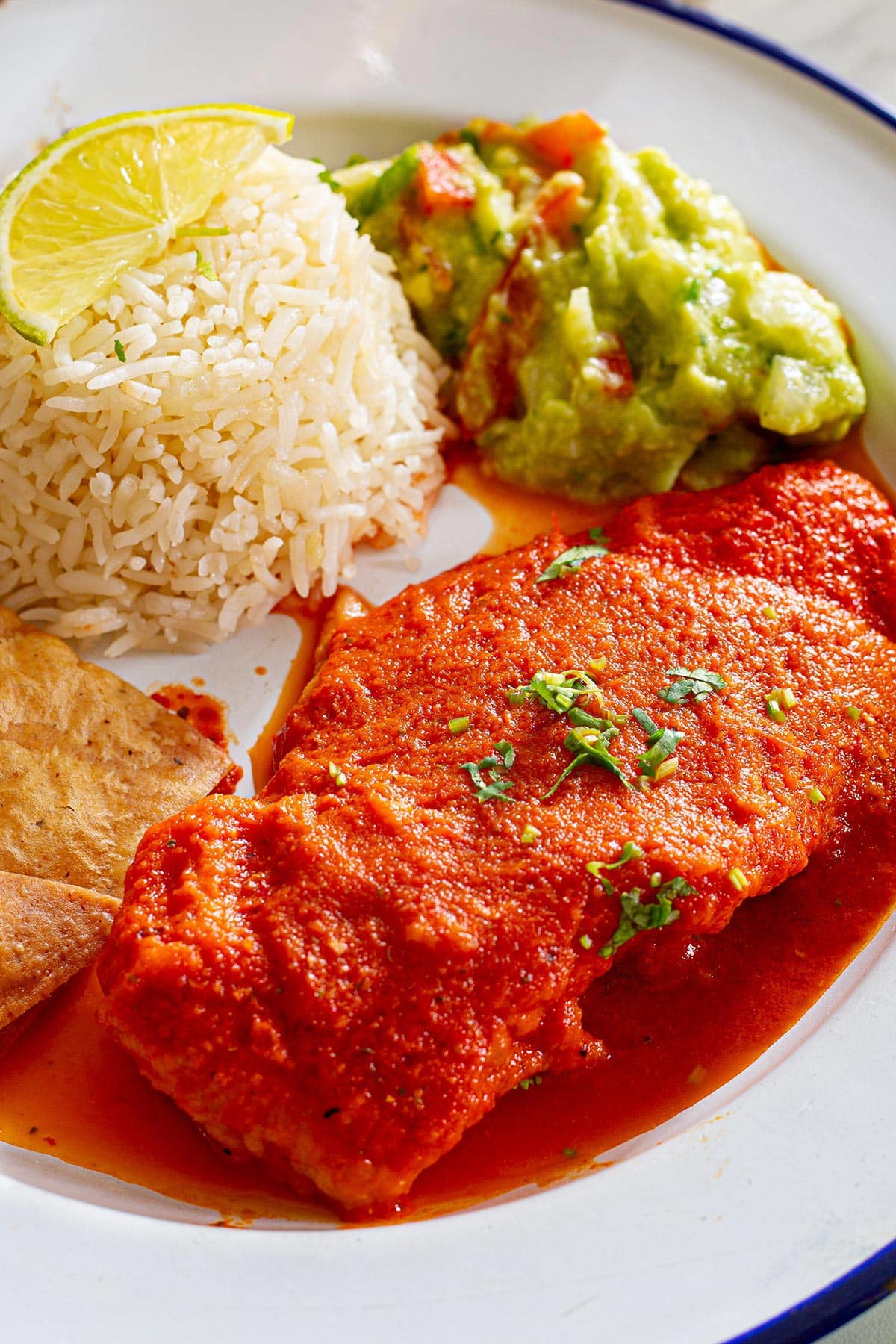
Store & Reheat
Pescado a la diabla is one of those recipes that tastes even better the next day. The fish absorbs all the flavors and spices in the sauce overnight, making it even tastier.
Store the cooked devilled fish in an airtight container in the fridge for up to 3 days. It’s also perfect for meal prep because it stores well in the freezer for up to 1 month. To reheat, place in a pan over medium heat for 4 to 5 minutes or until warm enough.
FAQ
What are pescado a la diabla ingredients?
The most common ingredients are fish fillets, tomatoes, chilies, herbs, and spices. The exact ingredients may vary depending on the region, family recipe, or taste preferences.
What is diabla sauce made of?
Diabla sauce is made of tomatoes, chilies like chipotle and chile de árbol, onion and garlic, and spices like oregano and thyme for extra flavor. The heat level can be adjusted by either adjusting the amount of chilies or opting for milder options.
When is this dish consumed?
Pescado a la diabla is a dish that can be consumed at any time, but it is particularly popular during Lent (Cuaresma in Spanish) in Mexico, especially on Fridays when many people refrain from eating meat. However, its consumption is not limited by season because it is a dish that can be enjoyed year-round and is often served at seafood restaurants and in many homes throughout Mexico.
More Pescado Recipes
We love seeing what you’ve made! Tag us on social media at @maricruzava.blog for a chance to be featured. Also, follow this blog on Instagram, Facebook, Pinterest & YouTube.
Video
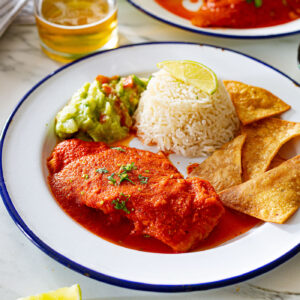
Pescado a la Diabla
Ingredients
- 1 lb fish fillets (cod, tilapia, red snapper, etc)
- all-purpose flour (as needed)
- 3 Tablespoons extra virgin olive oil
- cilantro (for serving)
- salt & pepper (to taste)
For the diabla sauce
- 4 medium tomatoes (cut into chunks)
- 1 small onion (cut into chunks)
- 6 chile de árbol peppers
- 3 guajillo peppers
- 2 small garlic cloves
- 1 teaspoon oregano
- 1 teaspoon fish bouillon (optional)
Instructions
- Place guajillo and chile de árbol in a bowl, and cover them with hot water. Leave them to soak for 10 minutes.
- Place tomatoes, onion, and garlic on a baking sheet. Drizzle everything with a little bit of olive oil.
- Preheat the broil in your oven.
- Place the tray under the broil and roast for 7-8 minutes or until onions are nicely charred and tomatoes have softened.
- Remove chilies from the water and place them in a blender along with roasted tomatoes, onion, garlic, thyme, and oregano.
- Add 1 ½ cups of water and blend until smooth.
- Place about ½ cup of all-purpose flour on a flat plate.
- Season the fish fillets with salt and pepper, then lightly flour them on both sides.
- Heat a bit of olive oil over medium heat in a non-stick pan.
- Pan-fry the fillets for about 3 minutes on one side, then gently flip them and fry until lightly golden and crisp.
- Carefully remove the fish from the pan and transfer it to a plate. Set aside.
- Add the red chile sauce to the pan and bring to a simmer.
- Season with salt and cook for 5-6 minutes or until the sauce thickens a little bit.
- Carefully, return the cooked fish to the pan and cook for 3 minutes basting the fillets with the spicy chili sauce and making sure they’re nicely immersed.
- Divide the fish fillets into serving plates, drizzle with plenty of sauce, sprinkle with chopped cilantro, and serve.
Notes
- If you want a mild-spicy dish, add less chile de arbol to the sauce.
- Soak and rehydrate the chili peppers before blending them to make a smoother sauce.
- Deseed the chilies as the seeds can add slightly bitter notes to the sauce.


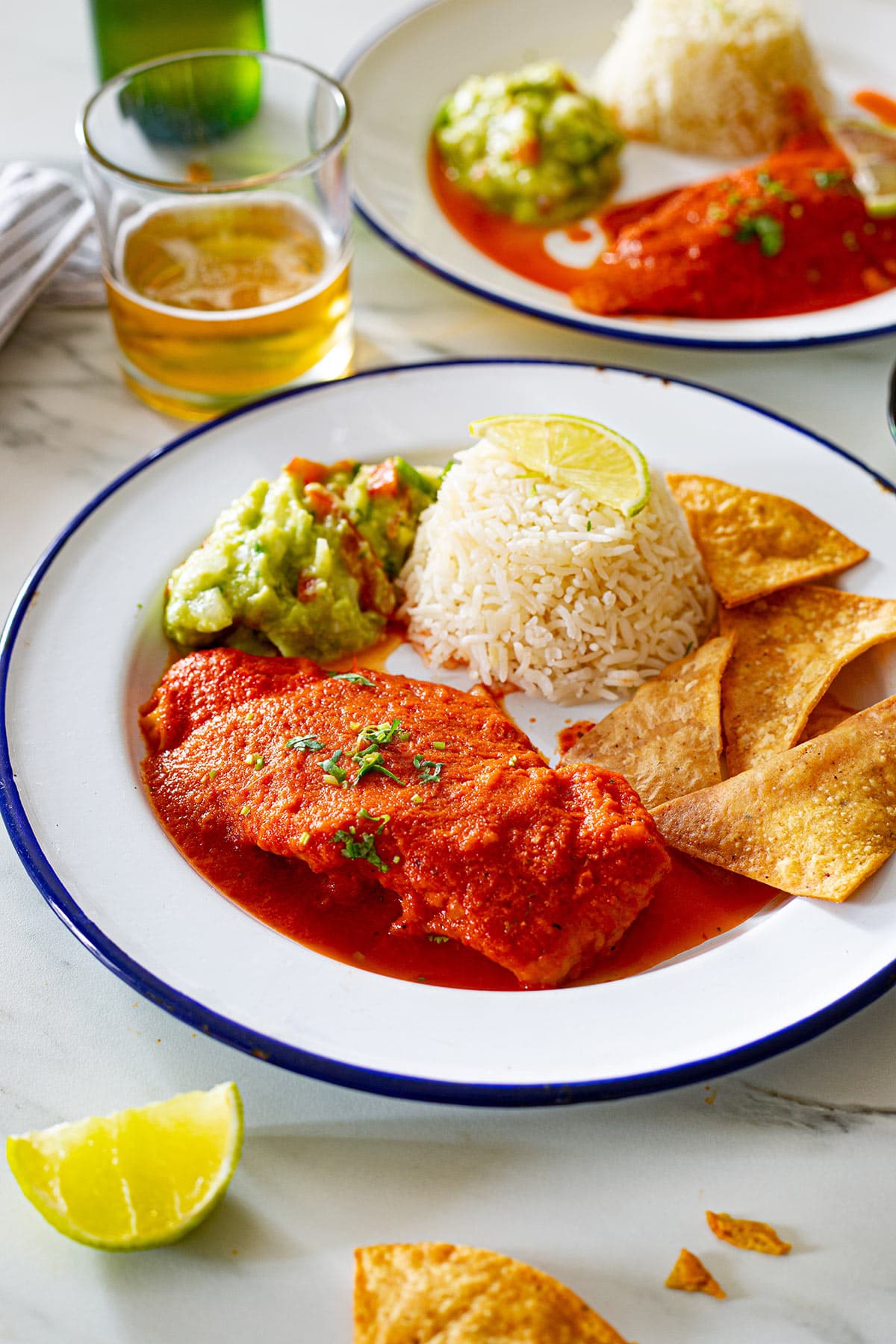
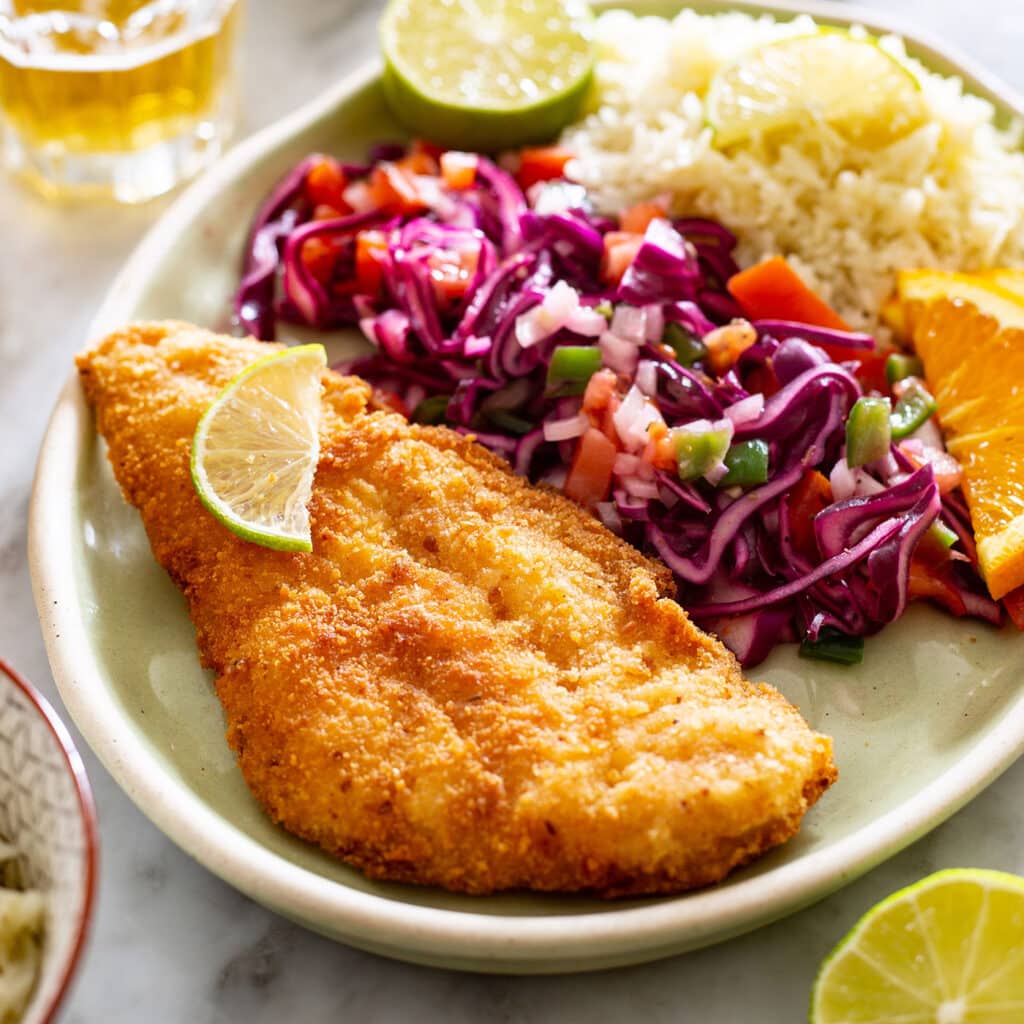



This and camarones a la diabla are my husband’s favorite dishes for cuaresma, the recipes are so easy to make and I even make a double batch of the sauce so I can use it to make camarones, pescado, and also chicken!